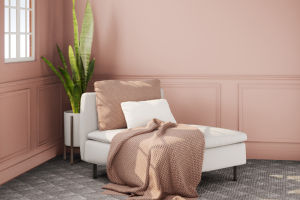Sofas are integral to modern living spaces, serving as practical furniture and a central element of home design.
However, beyond their basic functionality and aesthetic appeal, sofas have evolved in recent years in ways that reflect broader changes in lifestyle, technology, and even environmental concerns.
Sofas have long held a special place in the cultural fabric of domestic life. In many homes, the sofa is where family members gather after long days, where friends chat during social visits, and where people unwind with their favorite books, movies, or even naps. It’s not just a piece of furniture; it’s a symbol of relaxation and togetherness.
Historically, sofas were luxury items, reserved for the wealthy. In the Victorian era, the sofa, often referred to as a "settee" or "chaise longue," was a status symbol, used to display one's wealth and taste.
In today’s world, while sofas are more widely available, their design and material often still reflect personal identity, social status, and cultural values.
In minimalist homes, for instance, sofas tend to be sleek, with clean lines and neutral tones, reflecting simplicity and calm. In contrast, more opulent designs with plush fabrics and bold colors are favored in settings where homeowners wish to make a statement of luxury or artistic flair.
In recent years, sofa design has seen significant innovations, driven by changes in technology and consumer preferences. One of the most notable trends is the modular sofa. Modular designs allow users to customize their seating arrangements based on the size of their living spaces or the number of guests.
You can reconfigure individual sections into L-shaped, U-shaped, or more traditional sofa layouts, which increases both flexibility and functionality. This adaptability has made modular sofas particularly popular in urban apartments, where space is often limited.
Another innovation is the integration of technology into sofas. Many high-end models now come with built-in USB ports, wireless charging pads, and even speakers, transforming the sofa into a multifunctional hub. These smart features cater to tech-savvy consumers who want their furniture to seamlessly blend with their digital lifestyles.
As our lifestyles become more sedentary, sofas have also become a focal point for discussions around health and well-being. Prolonged sitting can lead to back problems, poor posture, and other health concerns, which is why there has been an increased focus on ergonomic design in sofas.
Many modern sofas are now designed with lumbar support, adjustable headrests, and firm yet comfortable cushioning to encourage better posture.
Additionally, the trend towards "wellness furniture" is growing. Sofas that promote relaxation, stress relief, and even mindfulness are entering the market.
Some sofas are now designed with built-in massage features or materials that are breathable and temperature-regulating, ensuring a more comfortable and health-conscious sitting experience.
Looking ahead, sofas are likely to continue evolving in response to changing lifestyles. One emerging trend is hybrid furniture, where sofas are combined with other functions, such as a desk or storage unit.
As more people work from home, there is a growing need for multifunctional furniture that can serve both as a workspace and a place for relaxation.
The sofa is much more than just a piece of furniture; it’s a reflection of cultural values, lifestyle changes, and even technological advancements. As our lives and homes continue to evolve, so too will the sofa, adapting to new needs and desires.
It’s a testament to how something as familiar as a sofa can continually surprise us with its ability to adapt and improve our daily lives.


